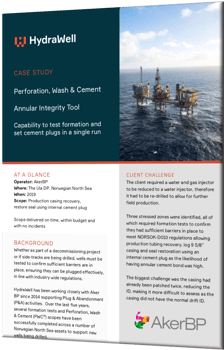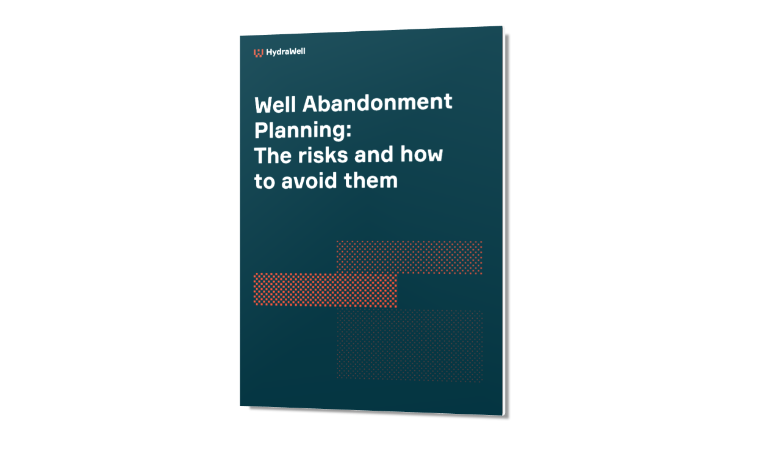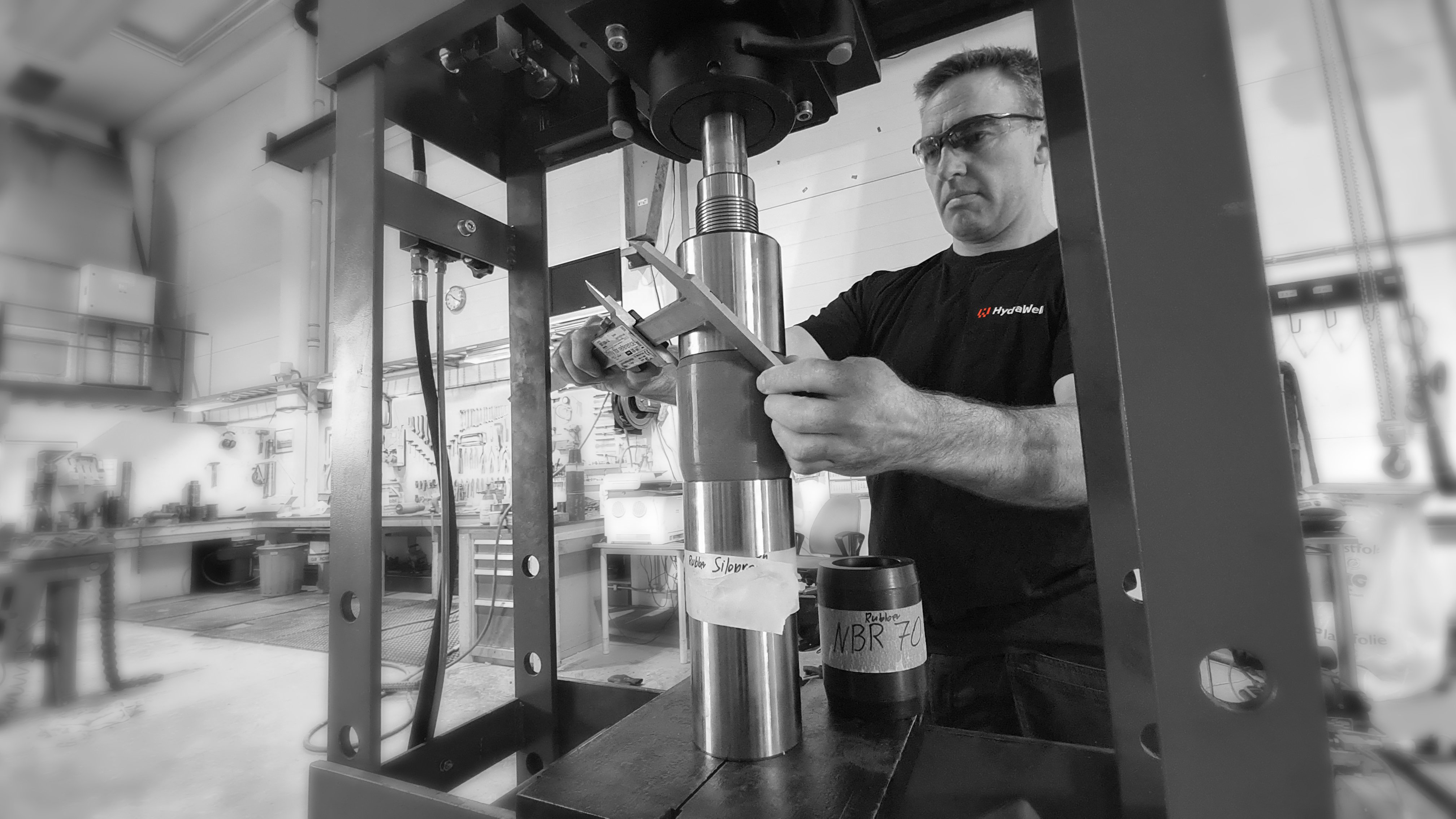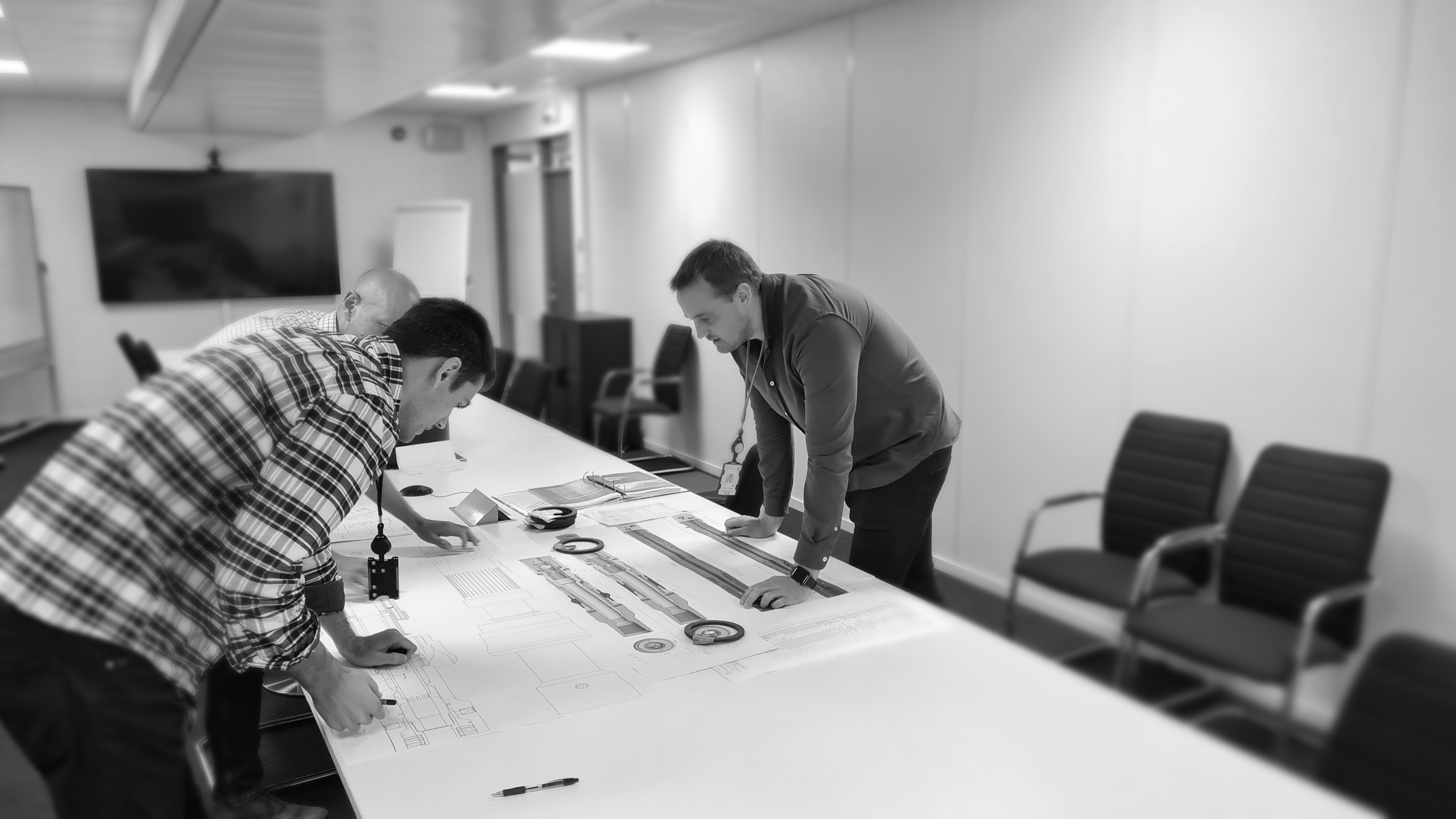Case Study
Formation Testing
CAPABILITY TO TEST FORMATION AND SET CEMENT PLUG IN A SINGLE RUN
Utilizing HydraWell´s Annular Integrity Test (AIT™) Tool
AT A GLANCE
Operator: AkerBP
Where: Norwegian North Sea
When: 2019
Scope: Production casing recovery, restore seal using internal cement plug
Scope delivered on time, within budget and with no incidents
CLIENT CHALLENGE
The client required a water and gas injector to be reduced to a water injector, therefore it had to be re-drilled to allow for further field production.
Three stressed zones were identified, all of which required formation tests to confirm they had sufficient barriers in place to meet NORSOK-D010 regulations allowing production tubing recovery, log 9 5/8” casing and seal restoration using an internal cement plug as the likelihood of having annular cement bond was high.
The biggest challenge was the casing had already been patched twice, reducing the ID, making it more difficult to assess as the casing did not have the normal drift ID.
BACKGROUND
Whether as part of a decommissioning project or if side-tracks are being drilled, wells must be tested to confirm sufficient barriers are in place, ensuring they can be plugged effectively, in line with industry wide regulations.
HydraWell has been working closely with Aker BP since 2014 supporting Plug & Abandonment (P&A) activities.Over the last five years, several formation tests and Perforation, Wash & Cement (PWC®) scopes have been successfully completed across a number of Norwegian North Sea assets to support new wells being drilled.
HYDRAWELL SOLUTION
HydraWell’s Annular Integrity Tool (AIT™) was used to test the integrity of the cement barriers. This is an efficient alternative solution to traditional bridge plugs using TCP guns spaced out for the interval to be tested providing a simple but effective method of verifying creeping shale/formation behind the casing.

In this case, the HydraWell AIT™ formation tester was re-designed to allow smaller drift ID because of the patches previously installed in the casing and bypass restrictions in the well.
Two zones were perforated, 30m apart as per industry regulations then a black test was performed to confirm the AIT™ was functioning correctly and increased pressure downhole to 153 bar. The leak rate was measured to maintain 68 bar pressure, and this was repeated to ensure no fluid came to the surface.
Finally, the customised tool was then left positioned in the well, used as a base whilst installing fresh cement, removing the requirement for additional runs to set the internal barrier.
RESULTS & BENEFITS
The HydraWell AIT™ provided an effective and cost-efficient method of delivering the integrity test.
Our formation test demonstrated annular seal as well as provided confirmation that the internal barrier was sufficient on the same run.
Overall, the scope of work was delivered safely and timely as the annulus barrier withheld test pressure, so the HydraWell Bottom Hole Assembly could be left in the well as a base for the internal cement barrier plug, saving one run for the operator (approximately 24 hours).
Want a copy of the Case Study?
Download it here!


An introductory White Paper
Well Abandonment Planning
- The risks and how to avoid them
->> Fill in your details and get your copy now:





